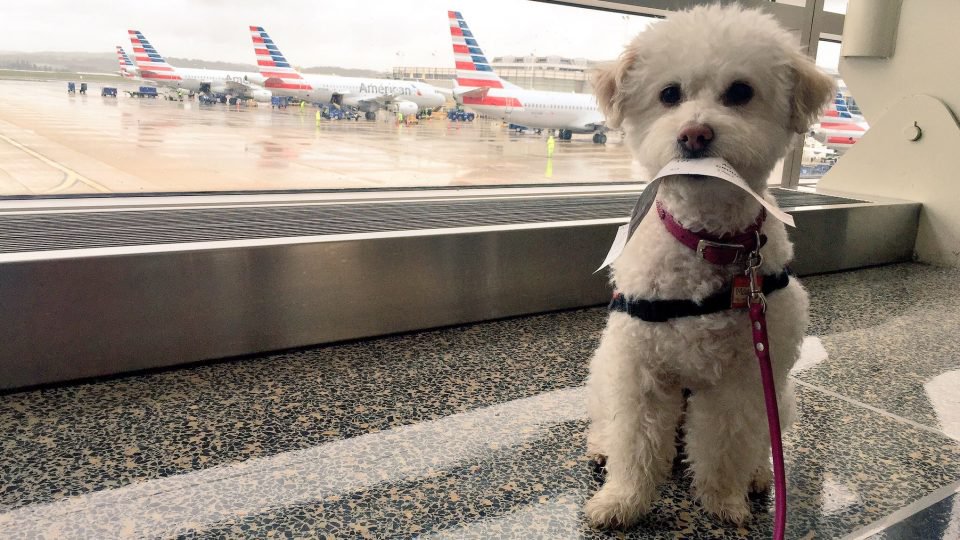Introduction
Flying with a dog can be a daunting prospect, but with the right preparation and knowledge, it can also be a rewarding experience for both you and your canine companion. From choosing the right airline to ensuring your pet’s comfort during the journey, there are several factors to consider when planning air travel with a dog. In this comprehensive guide, we’ll delve into everything you need to know about flying with your furry friend, including essential tips, airline regulations, and expert advice.
Chapter 1: Preparing Your Dog for Flight
Before embarking on your journey, it’s essential to adequately prepare your dog for the experience of flying. This includes ensuring they are healthy, comfortable, and familiar with the process of air travel.
- Consulting with Your Veterinarian: Prior to booking your flight, schedule a visit with your veterinarian to ensure your dog is fit for travel. Your vet can provide necessary vaccinations, health certificates, and advice on managing any pre-existing conditions.
- Acclimating Your Dog to Travel: If your dog is not accustomed to traveling or being confined in a carrier, it’s crucial to acclimate them gradually. Start by introducing them to the carrier or crate well in advance of your trip and take short practice journeys to help them adjust.
- Choosing the Right Carrier: Selecting the appropriate carrier is essential for your dog’s safety and comfort during the flight. Ensure the carrier is spacious enough for your dog to stand, turn around, and lie down comfortably, and meets airline regulations regarding size, materials, and ventilation.
- Packing Essential Supplies: Don’t forget to pack essential supplies for your dog, including food, water, medications, toys, and comfort items like blankets or bedding. Consider bringing familiar scents from home to help your dog feel more secure during the journey.
Chapter 2: Understanding Airline Regulations
Each airline has its own set of rules and regulations regarding pet travel, so it’s crucial to research and understand the policies of the airline you plan to fly with. Here are some common regulations to consider:
- Pet Size and Breed Restrictions: Some airlines have restrictions on the size and breed of dogs allowed in the cabin or cargo hold. Larger breeds may be required to travel in the cargo hold, while smaller dogs may be permitted in the cabin if they meet size and weight requirements.
- Health and Documentation Requirements: Most airlines require a recent health certificate from a veterinarian, confirming that your dog is healthy and up-to-date on vaccinations. Additionally, some destinations may have specific entry requirements for pets, such as additional vaccinations or quarantine periods.
- Carrier Specifications: Airlines have specific guidelines for pet carriers, including size, materials, and ventilation requirements. Make sure your carrier meets the airline’s specifications to avoid any issues during check-in.
- Booking and Fees: Be aware of the booking process and any associated fees for traveling with your dog. Some airlines charge a pet fee, while others may have limited availability for pet reservations, so it’s best to book your tickets well in advance.
Chapter 3: Tips for a Smooth Travel Experience
Flying with your dog can be a stress-free experience with proper preparation and planning. Here are some additional tips to ensure a smooth journey:
- Arrive Early: Arrive at the airport well in advance to allow plenty of time for check-in and security screening. This will help minimize stress for both you and your dog.
- Stay Calm and Confident: Dogs are highly attuned to their owner’s emotions, so it’s essential to remain calm and confident throughout the journey. Reassure your dog with soothing words and gestures to help them feel safe and secure.
- Provide Comfort and Distraction: Offer your dog comfort items such as toys, blankets, or treats to keep them occupied during the flight. Avoid feeding your dog a large meal before the flight to prevent motion sickness.
- Stay Hydrated: Keep your dog hydrated throughout the journey by offering small amounts of water regularly. Freeze a water bowl before the flight to ensure it stays cool and doesn’t spill during turbulence.
Conclusion
Flying with your dog can be a rewarding experience, allowing you to explore new destinations and create lasting memories together. By following the tips and guidelines outlined in this guide, you can ensure a safe and comfortable journey for your furry friend. Remember to plan ahead, familiarize yourself with airline regulations, and prioritize your dog’s well-being every step of the way. With proper preparation and care, flying with your dog can be an enjoyable and stress-free experience for both of you.
The Ultimate Guide to Flying with a Dog
Table of Contents
Embracing USDA APHIS Guidelines for Pet Travel with Confidence 2024
